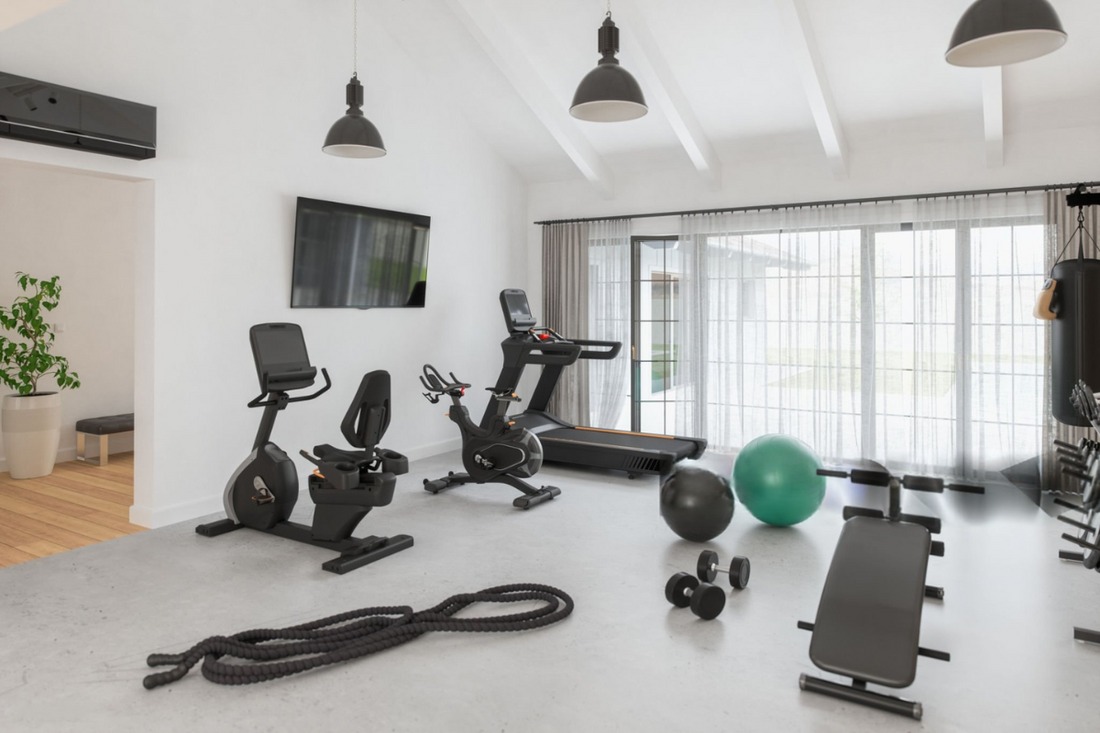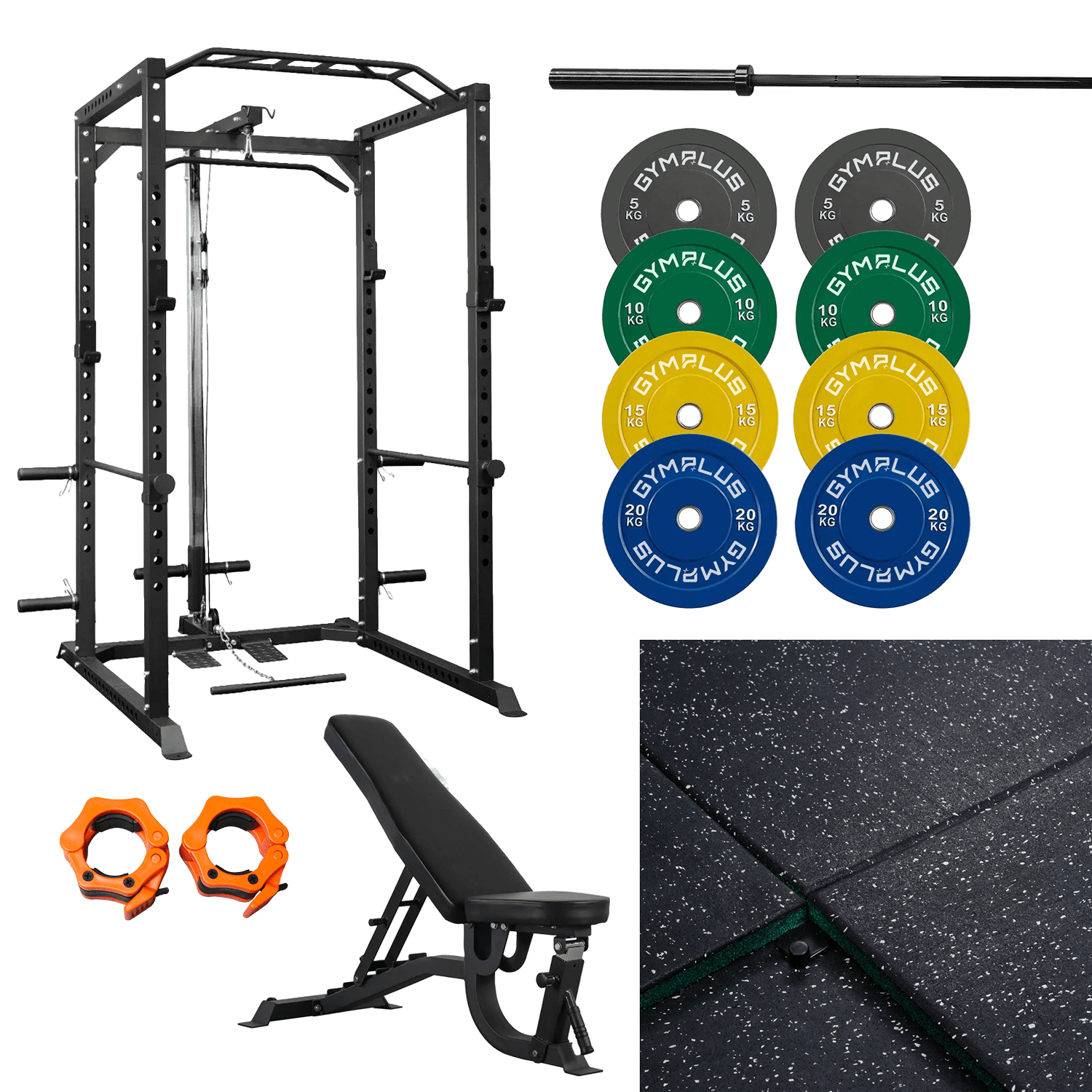Create a Home Workout Space That Delivers Results

You’ve decided that your fitness routine deserves an upgrade, but your schedule, commute, or gym crowd may be holding you back. That’s exactly why setting up a home or garage gym can be a game-changer. You get to train on your terms, in your space, when you want.
It isn’t only about buying equipment, it’s about designing a space that motivates you, keeps you consistent, and supports your long-term goals. In this article, you’ll learn how to assess your space, choose the right gear, design for functionality, set smart habits, and make sure the environment stays engaging rather than fading into the background.
You’ll discover how thoughtful equipment choices, clever layout, and smart routines come together to create not just a workout spot, but a “training home” you’ll actually use. When you’re ready, consider a complete setup like the Garage Gym Package from Gym Plus — it shows how having the right base equipment can make the journey smoother.
Let’s walk through the key steps so you can build a home gym that actually gets used.
Assess Your Space & Budget
The first step is to look at the area you have and decide what you really need. If you have a standard garage or spare room, check ceiling height, floor strength, ventilation, and lighting. Is the floor concrete? Can you mount anchors, or is it just a car-park slab? What about clearance around the equipment — will weights swing into walls or hit storage boxes?
Then think budget. Rather than chasing every “nice to have,” start with the essentials that cover the most ground. For most people, this means a solid rack or cage, barbell plus plates, and maybe a bench. Once those are sorted, you can add accessories like storage, mats, or cardio gear.
Because you’re investing in your own space, treat it as long-term. Choosing quality over minimal cost means fewer replacements and less frustration.
By clarifying your available space and budget in advance, you’ll avoid buying gear that doesn’t fit, that remains unused, or that creates a cluttered mess. Your setup should invite you into it — not intimidate you.
Essential Equipment Pieces
When building a home gym that works, some items deserve priority:
- Power rack / squat cage: This becomes the backbone of strength training. With a good rack, you can squat, bench, pull-up, drop barbell safely, and attach accessories.
- Barbell + bumper plates: A barbell lets you hit squats, deadlifts, presses — big compound movements. Bumper plates protect floor surfaces and reduce noise when dropping weight.
- Adjustable bench + dumbbells: A bench opens up incline/decline work and adds variety; dumbbells fill gaps and let you work unilateral muscles.
- Flooring / mats: A durable rubber or modular floor protects concrete, reduces vibration, and makes the environment feel intentional rather than thrown together.
- Storage & safety gear: Plate trees, barbell holders, collars, and maybe wall-mounted racks for space-saving. Safety also means making sure the rack has spotters or proper catches if you train alone.
When you see a complete package, such as the Garage Gym Package from Gym Plus, you’ll find many of these essentials wrapped into one bundle. That can simplify decision-making and ensure compatibility of components.
Designing for Function & Longevity
A setup may look great when built, but how it works week-to-week is what counts.
- Spatial arrangement is key: strength zone near the rack, cardio or warm-up area somewhere clear, mobility/stretch zone separate if possible. Keep high-traffic pathways open and avoid letting equipment crowd into a corner where it becomes unusable.
- Durability matters — steel frames, strong welds, quality finishes all reduce the risk of gear wobbling, cracking, or wearing out fast. For example, racks rated for 200 kg+ loads and designed to anchor securely give you confidence to push hard.
- Storage is often underestimated. Without tidy storage, weights and bars clutter the floor and quickly turn your gym from motivating to messy. Use wall hooks, plate racks, and maybe even vertical storage for benches or other accessories.
- Safety must be non-negotiable. Check that the area around your rack is clear, that your ceiling clearance is adequate for pull-ups or overhead lifts, and that the floor is level. Use collars on bars, use spotter arms if lifting heavy alone, and ensure cables or attachments fit the rack properly.
By focusing on layout, quality, and storage, you create not just a home gym — you create a training environment that invites you in day after day.
Getting the Most Out of Your Home Gym
Once the gear is in place, the challenge becomes consistency and enjoyment.
Your schedule may not always align with a commercial gym’s peak hours — that’s a strength. Use it. Choose times when you’re most likely to show up and commit. Treat your space not just as “some weights in the garage” but as your personal training zone. Start with programming that works for you: combine strength days, conditioning days, and mobility sessions. The variety will keep you engaged. You might use your rack for heavy lifts one day, switch to dumbbells the next for unilateral work, and another day set aside for bodyweight or mobility work.
Because your gym is a space you control, you can jump in without waiting for equipment, dealing with busy machines, or crowded classes. Track progress — whether it’s sets and reps, personal records, or simply number of workouts per week. Seeing the data helps you stay committed. Make milestones for 12 weeks, 6 months, and 12 months.
Maintenance and evolution are often ignored: check bolts on your rack monthly, wipe down sweat and chalk, inspect plates and bars. As you progress, you might add a sled, resistance bands, or a cardio machine. Your gym will change as you do, but the foundation stays. When you train regularly in this space, you’ll escape the “I’ll go to the gym when…” excuses. Your gym is right there.
Once your foundation gear is settled, if you prefer a simpler path into home-gym ownership, the Garage Gym Package available via Gym Plus provides a bundled, compatible option. It covers rack, barbell, plates, and more to get you moving quickly with fewer decisions.

Simple Path to Better Fitness
Building a home gym isn’t just assembling gear — it’s creating a space that supports your commitment, your schedule, and your goals.
With careful assessment of your area and budget, prioritising equipment that gives you versatility, designing a layout with function and safety in mind, and adopting habits that keep you engaged, you’ll transform a spare room or garage into your personal training zone.
Your consistency will improve, your frustration with crowded gyms or wasted time will fade, and you’ll have control of your fitness journey.
And if you choose to streamline that start, consider a complete setup from Gym Plus such as the Garage Gym Package — it provides quality gear and helps you hit the ground running.
You deserve a gym that works for you. It’s time to set the space, pick the gear, adopt the habits, and begin putting in the work. The gains wait, and so does that garage gym you’ve been meaning to build.
Turn your garage into a high-function workout zone. Learn space, gear, layout, habits + lifestyle tips, with gear help from Gym Plus.





